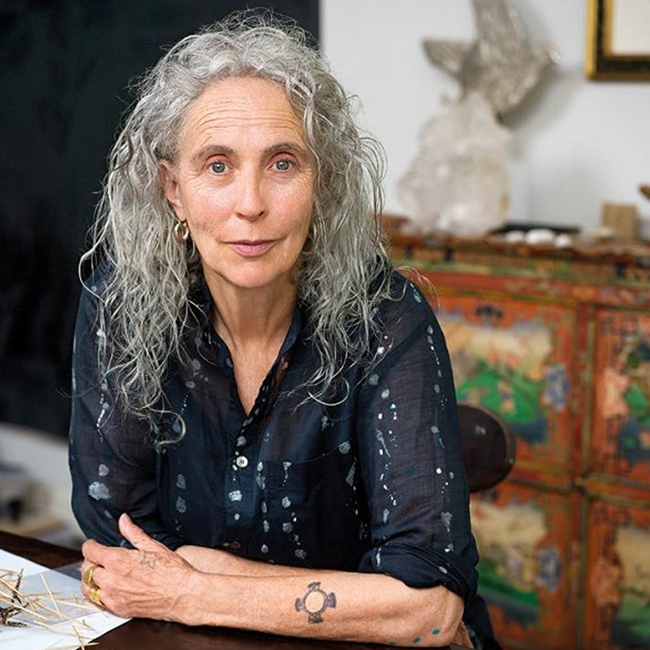Kiki Smith
Kiki Smith was born in 1954 in Nuremberg, Germany, the daughter of sculptor Tony Smith. In 1974 she enrolled at Hartford Art School in Connecticut. Around 1978, she joined Collaborative Projects, Inc. (Colab). It was during this period that she made her first artworks, monotypes of everyday objects.
Smith is a New York-based artist and a leading figure in the international art world. The human form, especially the female body, became central to her work in the 1980s. She began to focus on the themes of loss and death through her depiction of the body’s internal components, especially organs, cellular structures and the nervous system. The evacuation of these physiological components from the body presented anxieties surrounding the maternal body and the notion of the body as a receptacle for incorporeal components such as knowledge, belief and storytelling. By exposing its internal structures, Smith portrays the dichotomy between the psychological and physiological spheres of the body. In recent years, Smith’s work has evolved to incorporate animals, domestic objects and narrative tropes from classical mythology and folk tales.
Her career, spanning more than three decades, is characterized by great sperimentation with techniques and materials: she employs a wide-range of non-traditional materials ranging from hair and latex to beeswax and gold to a diverse body of media that includes painting, photography, bookmaking, sculpture, drawing, and printmaking.

Kiki Smith was born in 1954 in Nuremberg, Germany, the daughter of sculptor Tony Smith. In 1974 she enrolled at Hartford Art School in Connecticut. Around 1978, she joined Collaborative Projects, Inc. (Colab). It was during this period that she made her first artworks, monotypes of everyday objects.
Smith is a New York-based artist and a leading figure in the international art world. The human form, especially the female body, became central to her work in the 1980s. She began to focus on the themes of loss and death through her depiction of the body’s internal components, especially organs, cellular structures and the nervous system. The evacuation of these physiological components from the body presented anxieties surrounding the maternal body and the notion of the body as a receptacle for incorporeal components such as knowledge, belief and storytelling. By exposing its internal structures, Smith portrays the dichotomy between the psychological and physiological spheres of the body. In recent years, Smith’s work has evolved to incorporate animals, domestic objects and narrative tropes from classical mythology and folk tales.
Her career, spanning more than three decades, is characterized by great sperimentation with techniques and materials: she employs a wide-range of non-traditional materials ranging from hair and latex to beeswax and gold to a diverse body of media that includes painting, photography, bookmaking, sculpture, drawing, and printmaking.
